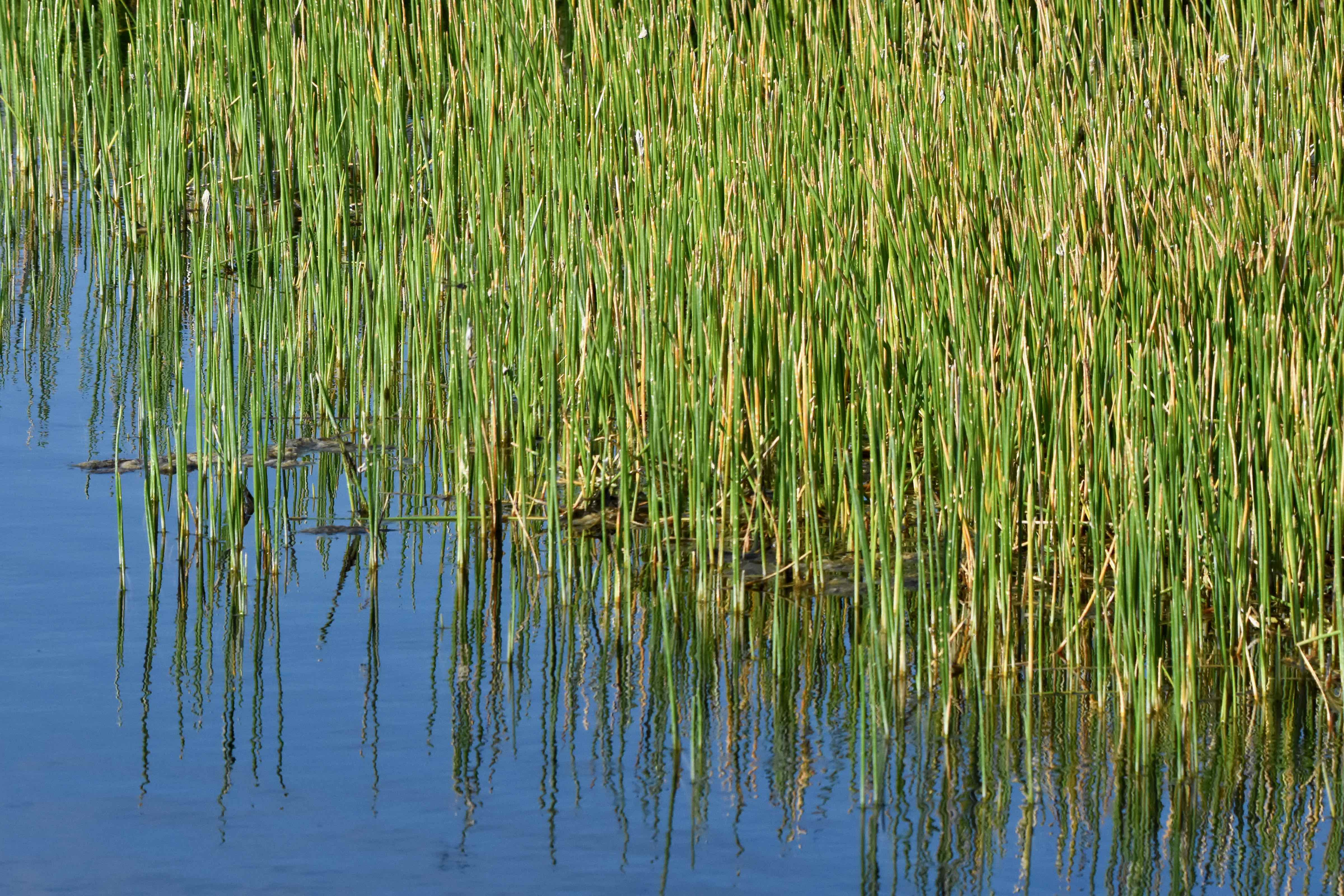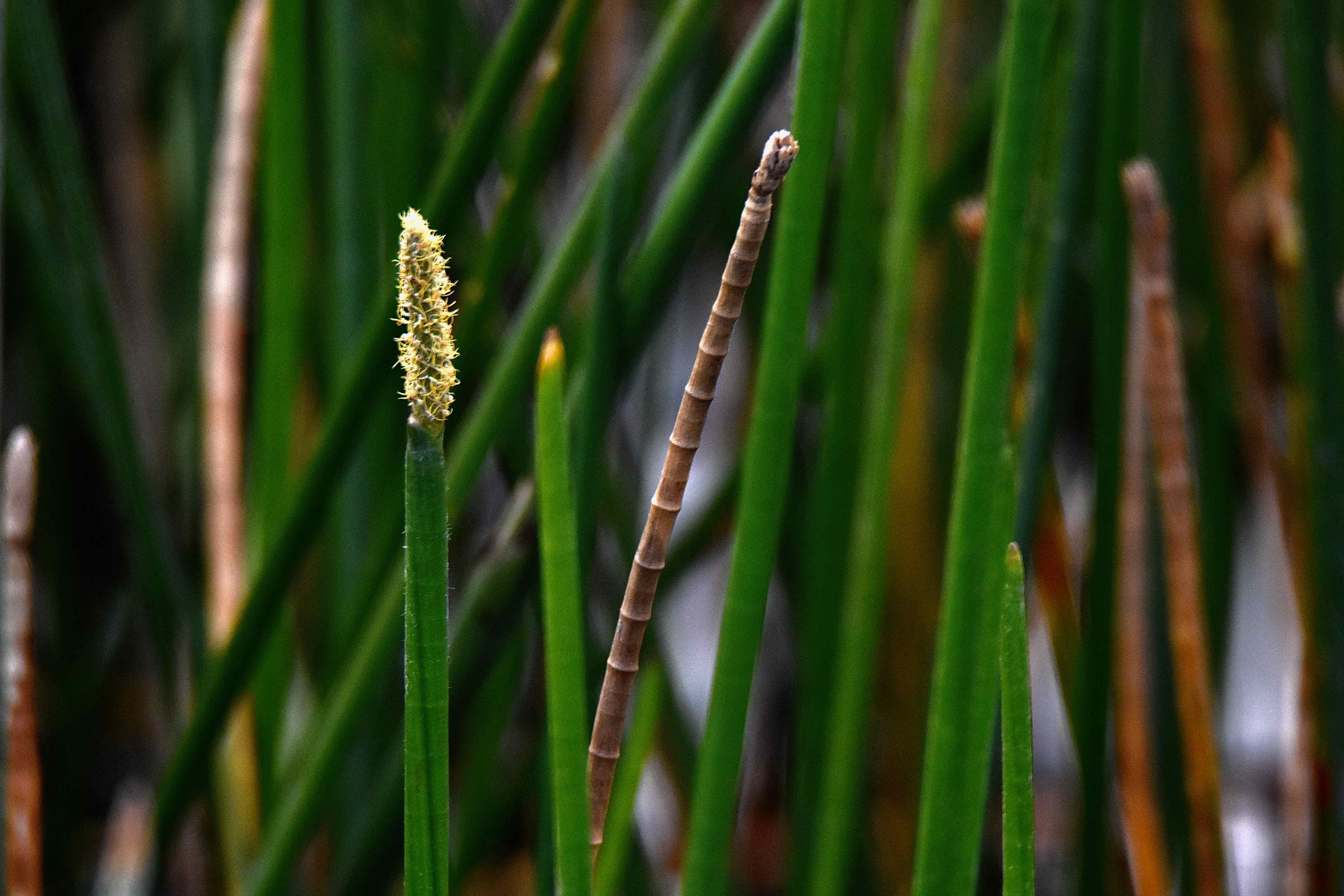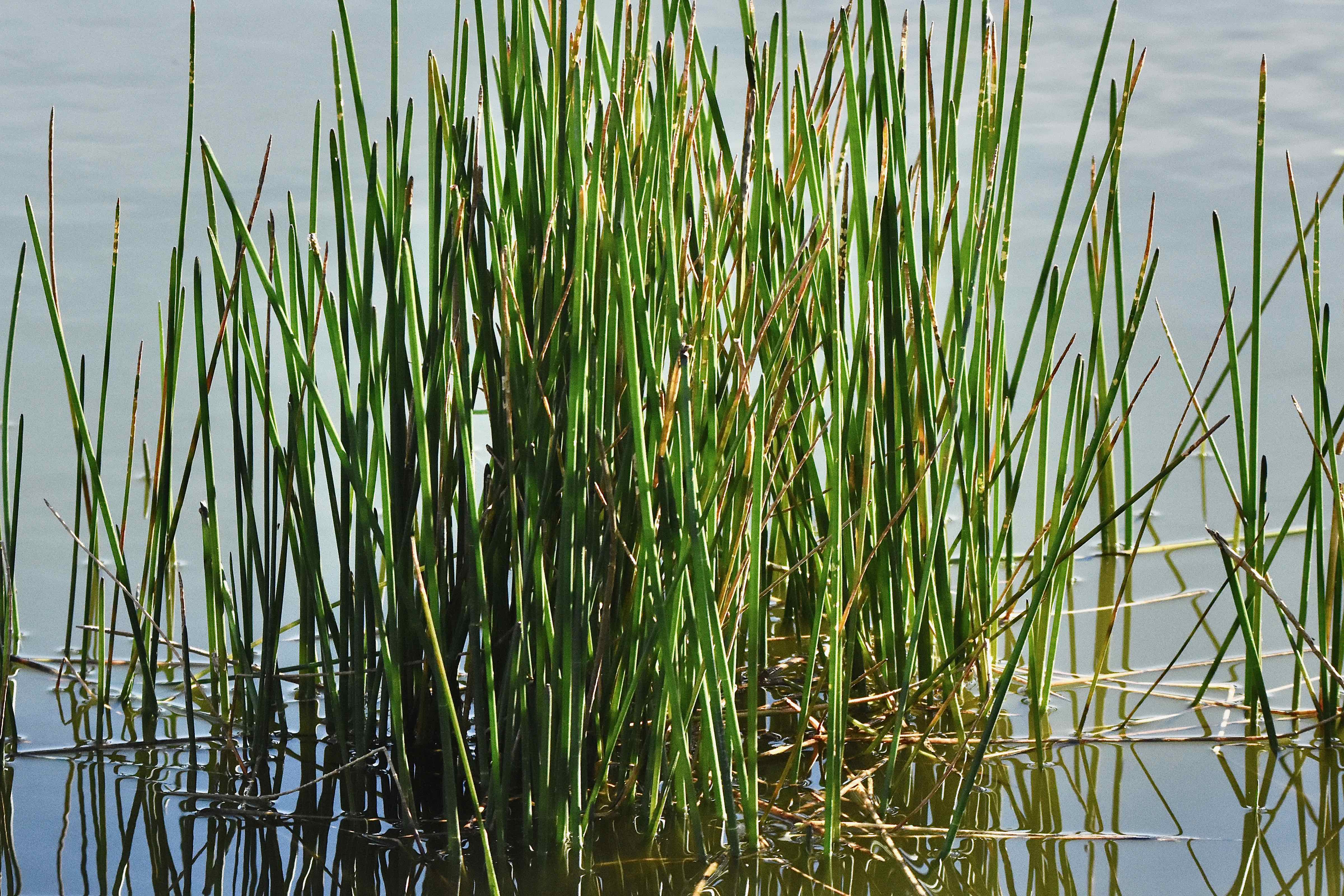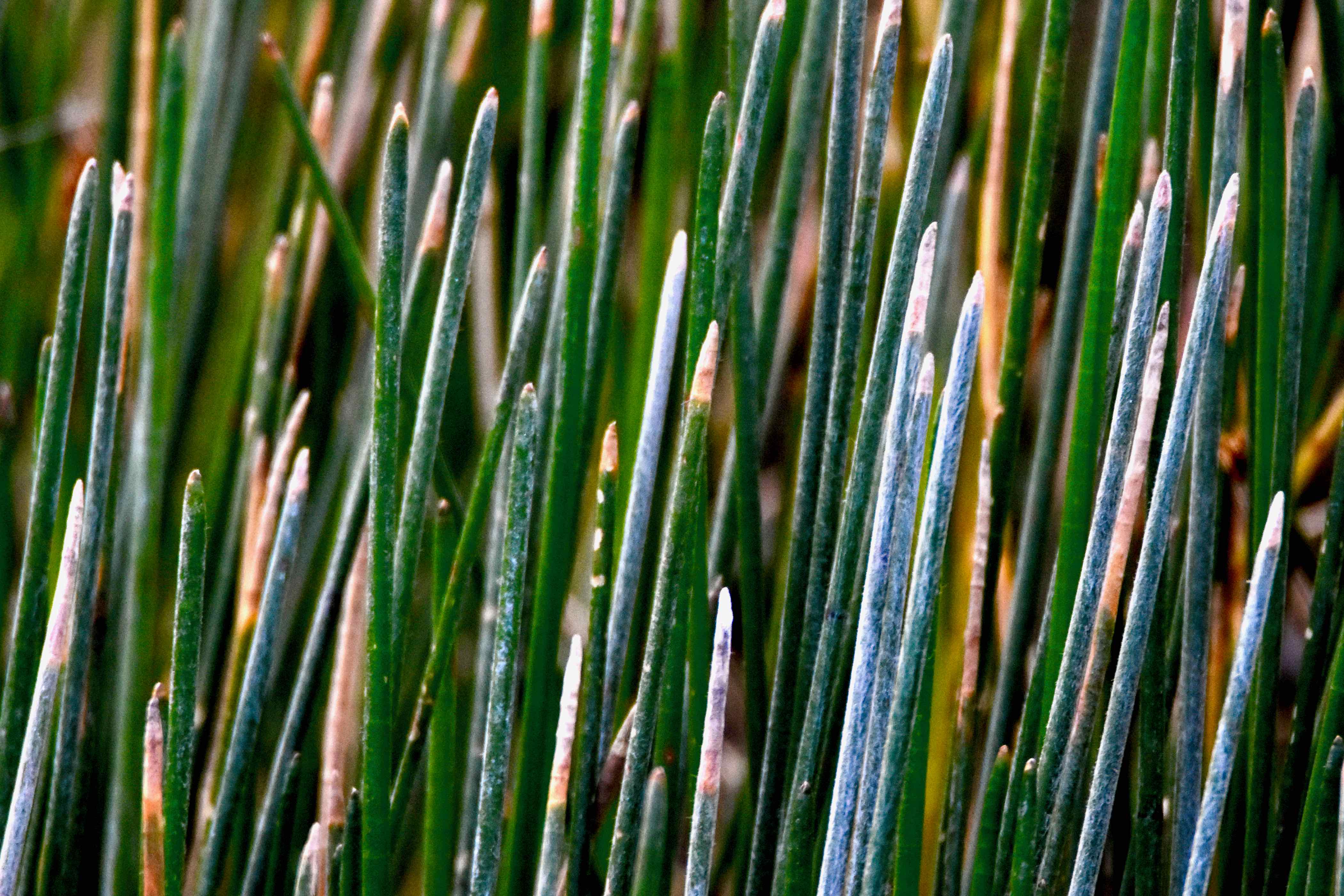
Knotted spikerush, photographed at Green Cay Nature Center, Boynton Beach, Palm Beach County, in February 2017.
Knotted spikerush, Eleocharis interstincta, is invisible. Not really, of course, as the photos on this page clearly demonstrate. But it is one of those plants that is so numerous in places that it becomes secondary to what might be lurking within its slender reeds.
A marsh wren, perhaps, or a warbler. Maybe a water snake or alligator hatchlings. Anything, a lot of things, more interesting than this aquatic sedge.
But in a sense, all those "more interesting" things speak to the importance of knotted spikerush and why it should at least be acknowledged briefly before we move on to what's within.
Knotted spikerush is a Florida native found mostly in the southern end of the Peninsula, roughly from Brevard to Miami-Dade and mainland Monroe counties. It's native to Alabama and Texas, the Bahamas, the Caribbean, Mexico, Central America and South America to Argentina.
It grows along the edges of freshwater ponds, lakes and wetlands — the genus name, Eleocharis, means beauty of the marsh. It can be as tall as four feet, round, with a diameter of about a half-inch. According to the University of Floria's Center for Aquatic and Invasive Plants, it might be the tallest spikerush in the state (there are 13 spikerush species in South Florida alone, according to the Institute for Regional Conservation). The stems, or culms, are segmented along their lenths (best seen in the photos below) and they are hollow. Knotted spikerush has no leaves, but it does sport a reddish sheath at the base.
Spikelets form at the tip of the stems, each with as many as 140 tiny flowers. Blooming season is roughly mid-spring to mid-winter. The fruit is a tiny nutlet, which forms during the same time. Knotted spikerush produces rhizomes, or underground stems, from which new plants arise. The plant can form dense patches as the photo above atests.
These dense patches provide both food and cover for a host of animals, great and small. Ducks and geese will eat the seeds; muskrats will eat the rhizomes and tubers. The plant provides habitat for a host of bugs and aquatic invertebrates that are important sources of food for animals a few rungs up on the food chain, including frogs, turtles, fish, snakes, birds and even baby alligators. When knotted spikerush dies, it continues to play an important environmental role: as it decays, it becomes food for small animals, which, in turn become food for bigger animals. And the capybara of South America, the world's largest rodent, uses knotted spikerush as a kind of famine food, grazing on it when other, more palatable items aren't available.
Knotted spikerush has a few human uses: in St. Lucia, it's used to make chair seats; some Native Americans used it to make mats. But there is this: researchers have found that the plant contains a group of chemicals called sulfated polysaccharides, which might have medical potential. Not too bad for an invisible plant.
Other common names: jointed spikerush. It is a member of Cyperaceae, the sedge family.
Click on photo for larger image
Links for Knotted Spikerush



